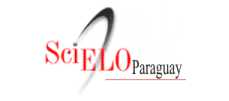Influencia de la obesidad en la severidad de la infección por SARS-CoV-2
Resumen
La obesidad es una enfermedad metabólica crónica asociada a un incremento de la morbimortalidad cuya prevalencia se ha incrementado a niveles pandémicos lo que la constituye como un factor de riesgo clínico típico de peor pronóstico en pacientes con COVID-19. El propósito de esta revisión fue categorizar los principales factores fisiopatológicos que influyen en la gravedad de COVID-19 en pacientes con obesidad, mediante la búsqueda sistemática de artículos publicados hasta el 11 de marzo de 2022 usando diferentes bases de datos (Scopus, Cochrane, PubMed, Web of Science y Medline).
Los resultados indican que la presencia de angiotensina II permite el ingreso del virus SARS-CoV-2 en las células del tejido adiposo convirtiéndolo en un depósito importante del virus lo que causa una diseminación más rápida a órganos vecinos. Estos valores incrementados de angiotensina II en el pulmón pueden inducir a vasoconstricción que a su vez conduce a un desajuste de ventilación/perfusión e hipoxemia, así como a inflamación y daño oxidativo. El incremento de la angiotensina II en pacientes con obesidad puede exacerbar el aumento del nivel de angiotensina II inducido por COVID-19, lo que lleva a una lesión pulmonar más grave, además de la formación de microcoágulos que colapsan la irrigación a nivel capilar, sobre todo la del alveolo, causando fallo a este nivel con extravasación de líquidos y neumonía fulminante. Además, la obesidad produce una alteración del sistema inmune comprometiendo así su capacidad de respuesta ante la infección respiratoria y propiciando un empeoramiento de la enfermedad.
Citas
2. Lavie CJ, Sanchis-Gomar F, Henry BM, Lippi G. COVID-19 and obesity: links and risks. Expert Rev Endocrinol Metab. 2020;15(4):215–6. doi: 10.1080/17446651.2020.1767589
3. Lavie CJ, Laddu D, Arena R, Ortega FB, Alpert MA, Kushner RF. Healthy Weight and Obesity Prevention: JACC Health Promotion Series. J Am Coll Cardiol. 2018;72(13):1506–31. doi: 10.1016/j.jacc.2018.08.1037
4. Elagizi A, Kachur S, Lavie CJ, Carbone S, Pandey A, Ortega FB, Milani RV. An overview and update on obesity and the obesity paradox in cardiovascular diseases. Prog Cardiovasc Dis. 2018;61(2):142–50
5. Dietz W, Santos-Burgoa C. Obesity and its implications for COVID-19 mortality. Obesity. 2020;28(6):1005. doi: https://doi.org/10.1002/oby.22818
6. Yadav R, Aggarwal S, Singh A. SARS-CoV-2-host dynamics: Increased risk of adverse outcomes of COVID-19 in obesity. Diabetes Metab Syndr 2020;14(5):1355–60
7. Yu W, Rohli KE, Yang S, Jia P. Impact of obesity on COVID-19 patients. J Diabetes Complications. 2021;35(3):107817. doi: 10.1016/j.jdiacomp.2020.107817
8. Almerie MQ, Kerrigan DD. The association between obesity and poor outcome after COVID-19 indicates a potential therapeutic role for montelukast. Med Hypotheses. 2020;143:109883. doi: 10.1016/j.mehy.2020.109883
9. Vieira de Siqueira JV, Garrido Almeida L, Zica BO, Brum IB, Barceló A, Garcia de Siqueira Galil A. Impact of obesity on hospitalizations and mortality, due to COVID-19: A systematic review. Obes Res Clin Pract. 2020;14(5):398–403. doi: 10.1016/j.orcp.2020.07.005
10. Hernández-Garduño E. Obesity is the comorbidity more strongly associated for Covid-19 in Mexico. A case-control study. Obes Res Clin Pract. 2020;14(4):375–9. doi: 10.1016/j.orcp.2020.06.001
11. Simonnet A, Chetboun M, Poissy J, Raverdy V, Noulette J, Duhamel A, et al. High prevalence of obesity in severe acute respiratory syndrome coronavirus‐2 (SARS‐CoV‐2) requiring invasive mechanical ventilation. Obes (Silver Spring). 2020; 28(7): 1195-9. doi: 10.1002/oby.22831
12. Lighter J, Phillips M, Hochman S, Sterling S, Johnson D, Francois F, Stachel A. Obesity in patients younger than 60 years is a risk factor for Covid-19 hospital admission. Clin Infect Dis. 2020;71(71): 896-7. doi: 10.1093/cid/ciaa415
13. Hendren NS, de Lemos JA, Ayers C, Das SR, Rao A, Carter S, et al. Association of Body Mass Index and age with morbidity and mortality in patients hospitalized with COVID-19: Results From the American Heart Association COVID-19 cardiovascular disease registry. Circulation. 2021;143(2):135–44. doi: 10.1161/CIRCULATIONAHA.120.051936
14. Zhu Z, Hasegawa K, Ma B, Fujiogi M, Camargo CA, Liang L. Association of obesity and its genetic predisposition with the risk of severe COVID-19: Analysis of population-based cohort data. Metabolism. 2020;112: 154345. doi: 10.1016/j.metabol.2020.154345
15. Sanchis-Gomar F, Lavie CJ, Mehra MR, Henry BM, Lippi G. Obesity and outcomes in COVID-19: When an epidemic and pandemic collide. Mayo Clin Proc. 2020;95(7):1445–53. doi: 10.1016/j.mayocp.2020.05.006
16. Malik P, Patel U, Patel K, Martin M, Shah Ch, Mehta D, et al. Obesity a predictor of outcomes of COVID‐19 hospitalized patients—A systematic review and meta‐analysis. J Med Virol. 2021; 93(2): 1188-93. doi: 10.1002/jmv.26555
17. Nicodemo M, Spreghini MR, Manco M, Wietrzykowska Sforza R, Morino G. Childhood obesity and COVID-19 lockdown: Remarks on eating habits of patients enrolled in a food-education program. Nutrients. 2021;13(2):383. doi: 10.3390/nu13020383
18. Dixon AE, Peters U. The effect of obesity on lung function. Expert Rev Respir Med. 2018;12(9):755–67. doi: 10.1080/17476348.2018.1506331
19. Wolf M, Alladina J, Navarrete-Welton A, Shoults B, Brait K, Ziehr D, et al. Obesity and critical illness in COVID-19: Respiratory pathophysiology. Obesity (Silver Spring). 2021;29(5):870–8. doi: 10.1002/oby.23142
20. Yan T, Xiao R, Wang N, Shang R, Lin G. Obesity and severe coronavirus disease 2019: molecular mechanisms, paths forward, and therapeutic opportunities. Theranostics. 2021;11(17):8234–53. doi: 10.7150/thno.59293
21. van der Voort PHJ, Moser J, Zandstra DF, Muller Kobold AC, Knoester M, Calkhoven CF, et al. Leptin levels in SARS-CoV-2 infection related respiratory failure: A cross-sectional study and a pathophysiological framework on the role of fat tissue. Heliyon. 2020;6(8):e04696. doi: 10.1016/j.heliyon.2020.e04696
22. Nadolsky KZ, Hurley DL, Garvey WT. Covid-19 & obesity: Beyond Bmi. Endocr Pract. 2020;26(8):923–5. doi: 10.4158/EP-2020-0302
23. Földi M, Farkas N, Kiss S, Zádori N, Váncsa S, Szakó L, et al. Obesity is a risk factor for developing critical condition in COVID‐19 patients: A systematic review and meta‐analysis. Obes Rev. 2020;21(10): e13095. doi: 10.1111/obr.13095
24. Kimura T, Namkoong H. Susceptibility of the obese population to COVID-19. Int J Infect Dis. 2020; 101:380–1. doi: 10.1016/j.ijid.2020.10.015
25. Viana Bagni U, da Silva Ribeiro KD, Soares Bezerra D, Cavalcante de Barros D, de Magalhães Fittipaldi AL, Pimenta da Silva Araújo RG, Alves Ferreira A. Anthropometric assessment in ambulatory nutrition amid the COVID-19 pandemic: Possibilities for the remote and in-person care. Clin Nutr ESPEN. 2021; 41:186–92. doi: 10.1016/j.clnesp.2020.11.022
26. Chu Y, Yang J, Shi J, Zhang P, Wang X. Obesity is associated with increased severity of disease in COVID-19 pneumonia: a systematic review and meta-analysis. Eur J Med Res. 2020; 25(1):64. doi: 10.1186/s40001-020-00464-9
27. Rubio Herrera MA, Bretón Lesmes I. Obesity in the COVID era: A global health challenge. Endocrinol Diabetes Nutr (Engl Ed). 2021;68(2):123–9. doi: 10.1016/j.endinu.2020.10.001
28. Blaszczak AM, Jalilvand A, Hsueh WA. Adipocytes, innate immunity and obesity: A mini-review. Front Immunol. 2021;12:650768. doi: 10.3389/fimmu.2021.650768
29. Michalakis K, Ilias I. SARS-CoV-2 infection and obesity: Common inflammatory and metabolic aspects. Diabetes Metab Syndr. 2020; 14(4):469–71. doi: 10.1016/j.dsx.2020.04.033
30. Mehta P, Fajgenbaum DC. Is severe COVID-19 a cytokine storm syndrome: a hyperinflammatory debate. Curr Opin Rheumatol. 2021; 33 (5):419–30. doi: 10.1097/BOR.0000000000000822
31. Korakas E, Ikonomidis I, Kousathana F, Balampanis K, Kountouri A, Raptis A, et al. Obesity and COVID-19: immune and metabolic derangement as a possible link to adverse clinical outcomes. Am J Physiol Endocrinol Metab. 2020;319(1):E105–9. doi: 10.1152/ajpendo.00198.2020
32. Santa Cruz A, Mendes-Frias A, Oliveira AI, Dias L, Matos AR, Carvalho A, et al. Interleukin-6 is a biomarker for the development of fatal severe acute respiratory syndrome coronavirus 2 pneumonia. Front Immunol. 2021; 12:613422. doi: 10.3389/fimmu.2021.613422
33. Luzi L, Radaelli MG. Influenza and obesity: its odd relationship and the lessons for COVID-19 pandemic. Acta Diabetol. 2020; 57(6):759–64. doi: 10.1007/s00592-020-01522-8
34. Costa de Lucena TM, Fernandes da Silva Santos A, de Lima BR, de Albuquerque Borborema ME, de Azevêdo Silva J. Mechanism of inflammatory response in associated comorbidities in COVID-19. Diabetes Metab Syndr. 2020;14(4):597–600. doi: 10.1016/j.dsx.2020.05.025
35. Albashir AAD. The potential impacts of obesity on COVID-19. Clin Med (Lond). 2020; 20(4):e109–13. doi: 10.7861/clinmed.2020-0239
36. Lee J, Park SS, Kim TY, Lee DG, Kim DW. Lymphopenia as a biological predictor of outcomes in COVID-19 patients: A nationwide cohort study. Cancers (Basel). 2021;13(3):471. doi: 10.3390/cancers13030471
37. Chen YM, Zheng Y, Yu Y, Wang Y, Huang Q, Qian F, et al. Blood molecular markers associated with COVID‐19 immunopathology and multi‐organ damage. EMBO J. 2020; 39(24):e105896. doi: 10.15252/embj.2020105896
38. Kruglikov IL, Scherer PE. The role of adipocytes and adipocyte-like cells in the severity of COVID-19 infections. Obesity (Silver Spring). 2020;28(7):1187–90. doi: 10.1002/oby.22856
39. Bornstein SR, Dalan R, Hopkins D, Mingrone G, Boehm BO. Endocrine and metabolic link to coronavirus infection. Nat Rev Endocrinol. 2020; 16(6): 297–8. doi: 10.1038/s41574-020-0353-9
40. Wrapp D, Wang N, Corbett KS, Goldsmith JA, Hsieh ChL, Abiona O, et al. Cryo-EM structure of the 2019-nCoV spike in the prefusion conformation. Science. 2020;367(6483):1260–3. doi:10.1126/science.abb2507
41. Jia X, Yin Ch, Lu S, Chen Y, Liu Q, Bai J, et al. Two things about COVID-19 might need attention [Internet]. Preprints. 2020 [cited 2022 mar 11]. Available from: https://doi.org/10.20944/preprints202002.0315.v1
42. Williamson EJ, Walker AJ, Bhaskaran K, Bacon S, Bates Ch, Morton CE, et al. Factors associated with COVID-19-related death using OpenSAFELY. Nature. 2020;584(7821):430–6. doi: 10.1038/s41586-020-2521-4
43. Liu Y, Yang Y, Zhang C, Huang F, Wang F, Yuan J, et al. Clinical and biochemical indexes from 2019-nCoV infected patients linked to viral loads and lung injury. Sci China Life Sci. 2020;63(3):364–74. doi: 10.1007/s11427-020-1643-8
44. Rao S, Lau A, So HCh. Exploring diseases/Traits and blood proteins causally related to expression of ACE2, the putative receptor of SARS-CoV-2: A mendelian randomization analysis highlights tentative relevance of diabetes-related traits. Diabetes Care [Internet]. 2020 [cited 2022 Mar 11]; 43(7):1416–26. Available from: https://diabetesjournals.org/care/article/43/7/1416/35591/Exploring-Diseases-Traits-and-Blood-Proteins. doi: https://doi.org/10.2337/dc20-0643
45. Pandey A, Patel KV, Lavie CJ. Obesity, central adiposity, and fitness: Understanding the obesity paradox in the context of other cardiometabolic parameters. Mayo Clin Proc. 2018;93(6):676–8. doi: 10.1016/j.mayocp.2018.04.015
46. Gazzaruso C, Paolozzi E, Valenti C, Brocchetta M, Naldani D, Grignani C, et al. Association between antithrombin and mortality in patients with COVID-19. A possible link with obesity. Nutr Metab Cardiovasc Dis. 2020;30(11):1914–9. doi: 10.1016/j.numecd.2020.07.040
47. Zavascki AP, Falci DR. Clinical Characteristics of Covid-19 in China. N Engl J Med [Internet]. 2020 [cited 2022 Mar 11]; 382:1859-62. Available from: https://www.nejm.org/doi/10.1056/NEJMc2005203?url_ver=Z39.88-2003&rfr_id=ori:rid:crossref.org&rfr_dat=cr_pub%20%200pubmed. doi: 10.1056/NEJMc2005203
48. Lakkis JI, Weir MR. Obesity and kidney disease. Prog Cardiovasc Dis. 2018; 61(2):157–67. doi: 10.1016/j.pcad.2018.07.005
49. Nizzoli ME, Merati G, Tenore A, Picone C, Consensi E, Perotti L, et al. Circulating endothelial cells in COVID-19. Am J Hematol. 2020;95(8): E187–8. doi: 10.1002/ajh.25881
50. Zhang X, Jiang M, Yang J. Potential value of circulating endothelial cells for the diagnosis and treatment of COVID-19. Int J Infect Dis. 2021; 107:232–3. doi: 10.1016/j.ijid.2021.05.001
51. Del Turco S, Vianello A, Ragusa R, Caselli Ch, Basta G. COVID-19 and cardiovascular consequences: Is the endothelial dysfunction the hardest challenge?. Thromb Res. 2020;196:143–51. doi: 10.1016/j.thromres.2020.08.039
52. Bonaventura A, Vecchié A, Dagna L, Martinod K, Dixon DL, Van Tassell BW, et al. Endothelial dysfunction and immunothrombosis as key pathogenic mechanisms in COVID-19. Nat Rev Immunol. 2021; 21 (5) : 319–29. doi: 10.1038/s41577-021-00536-9
53. Bilal B, Saleem F, Fatima SS. Alcohol consumption and obesity: The hidden scare with COVID-19 severity. Med Hypotheses. 2020 ;144 : 110272. doi: 10.1016/j.mehy.2020.110272
54. Chaar ME, King K, Lima AG. Are black and Hispanic persons disproportionately affected by COVID-19 because of higher obesity rates? Surg Obes Relat Dis. 2020;16(8):1096–9. doi: 10.1016/j.soard.2020.04.038
55. Variation in the COVID-19 infection–fatality ratio by age, time, and geography during the pre-vaccine era: a systematic analysis. Lancet [Internet]. 2022 [cited 2022 Mar 26]; 399(10334): 1469-88. Available from: https://www.thelancet.com/journals/lancet/article/PIIS0140-6736(21)02867-1/fulltext. doi: 10.1016/S0140-6736(21)02867-1
56. Bourgonje AR, Abdulle AE, Timens W, Hillebrands JL, Navis GJ, Gordijn SJ, et al. Angiotensin‐converting enzyme‐2 (ACE2), SARS‐CoV‐2 and the pathophysiology of coronavirus disease 2019 (COVID‐19). J Pathol. 2020; 251(3): 228-48. doi: 10.1002/path.5471
57. Levin AT, Hanage WP, Owusu-Boaitey N, Cochran KB, Walsh SP, Meyerowitz-Katz G. Assessing the age specificity of infection fatality rates for COVID-19: systematic review, meta-analysis, and public policy implications. Eur J Epidemiol. 2020;35(12):1123–38. doi: 10.1007/s10654-020-00698-1
58. Caussy C, Wallet F, Laville M, Disse E. Obesity is Associated with Severe Forms of COVID‐19. Obesity (Silver Spring). 2020; 28(10): 1993. doi: 10.1002/oby.22998
59. Docherty AB, Harrison EM, Green ChA, Hardwick HE, Pius R, Norman L, et al. Features of 20 133 UK patients in hospital with covid-19 using the ISARIC WHO Clinical Characterisation Protocol: prospective observational cohort study. BMJ. 2020;369: m1985. doi: 10.1136/bmj.m1985

















